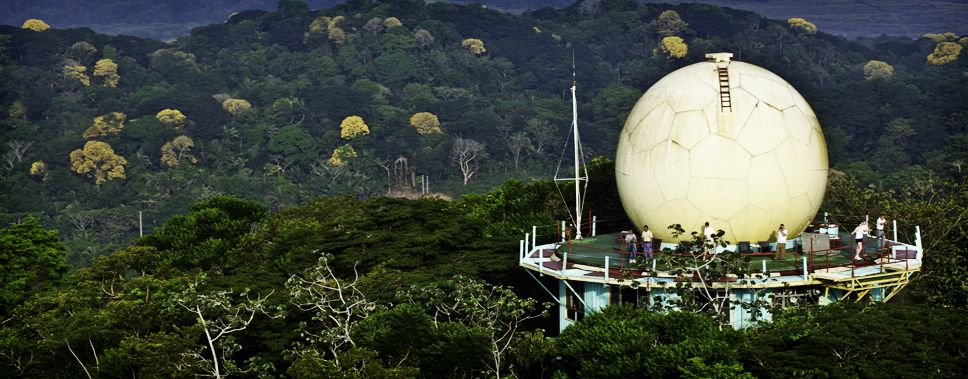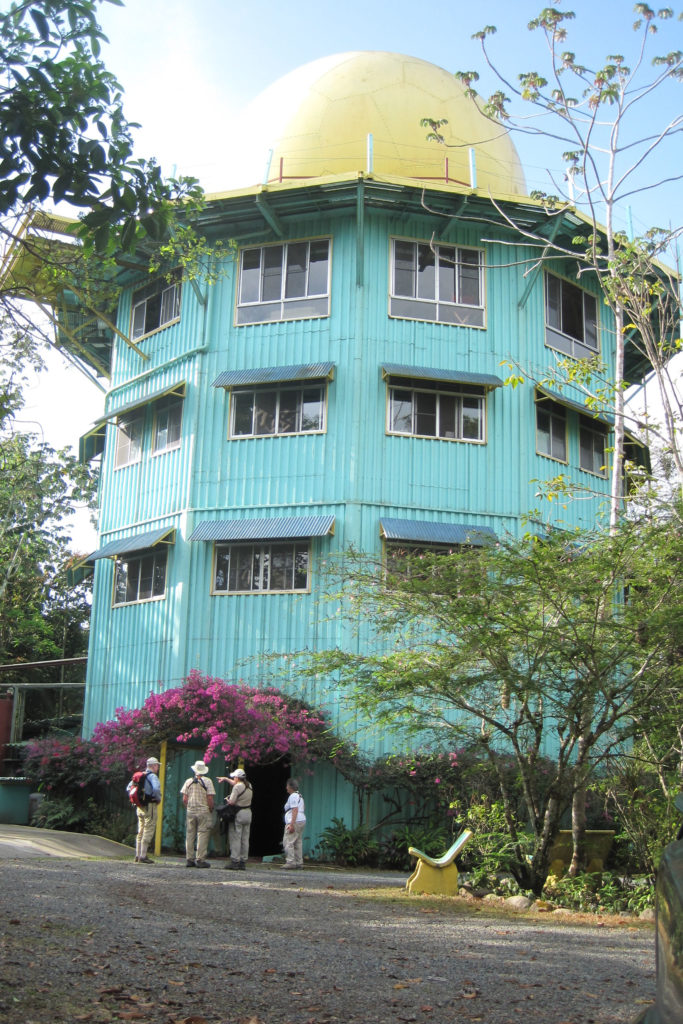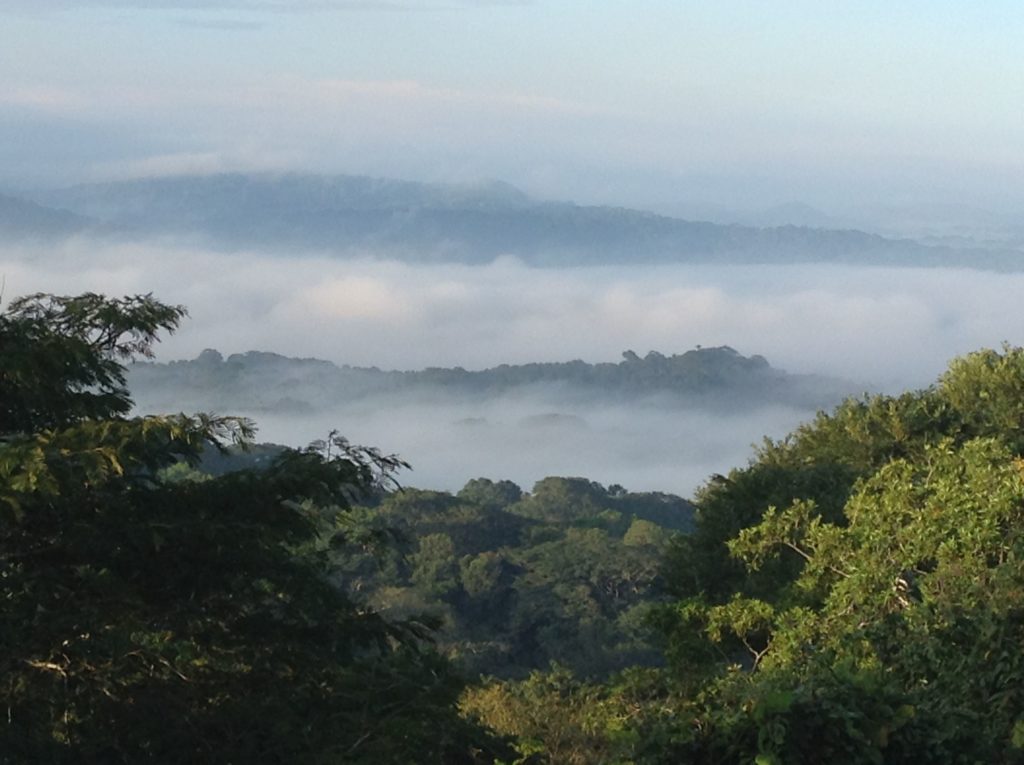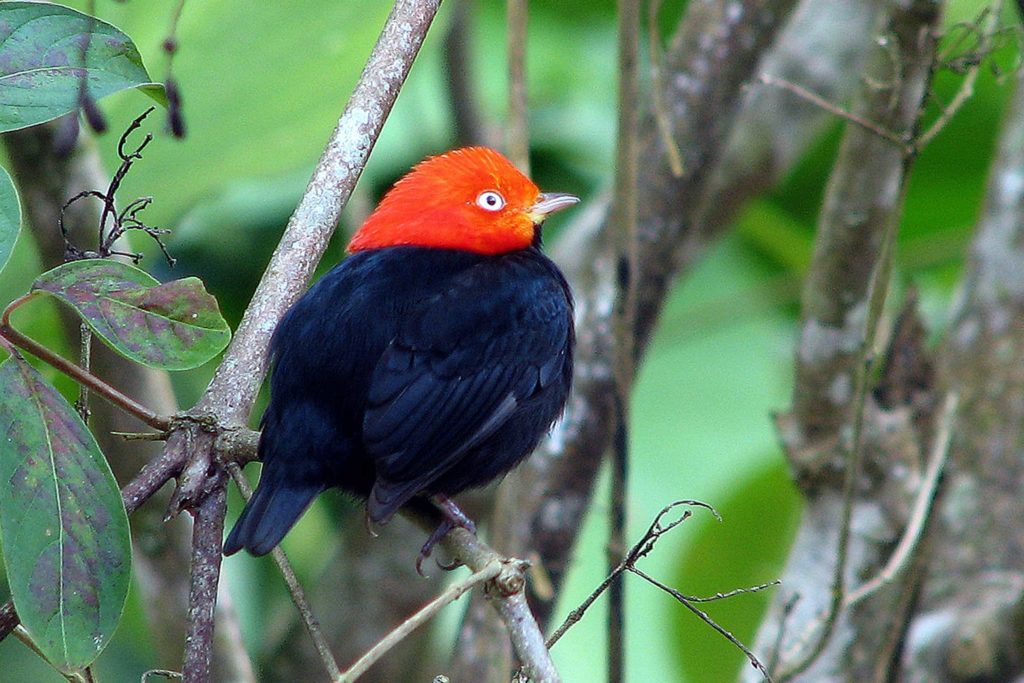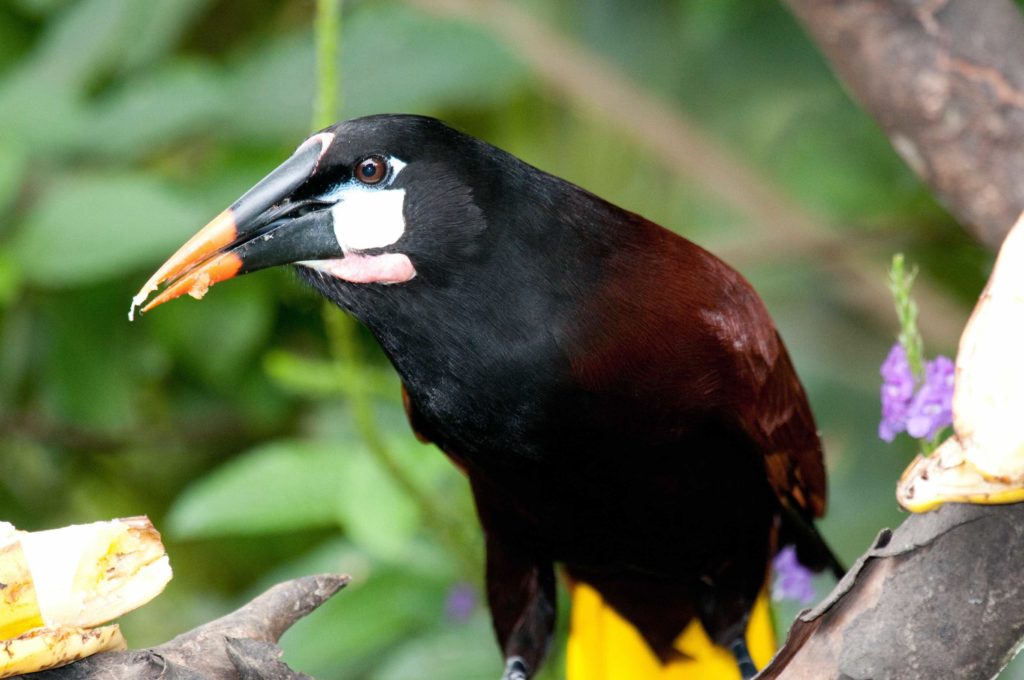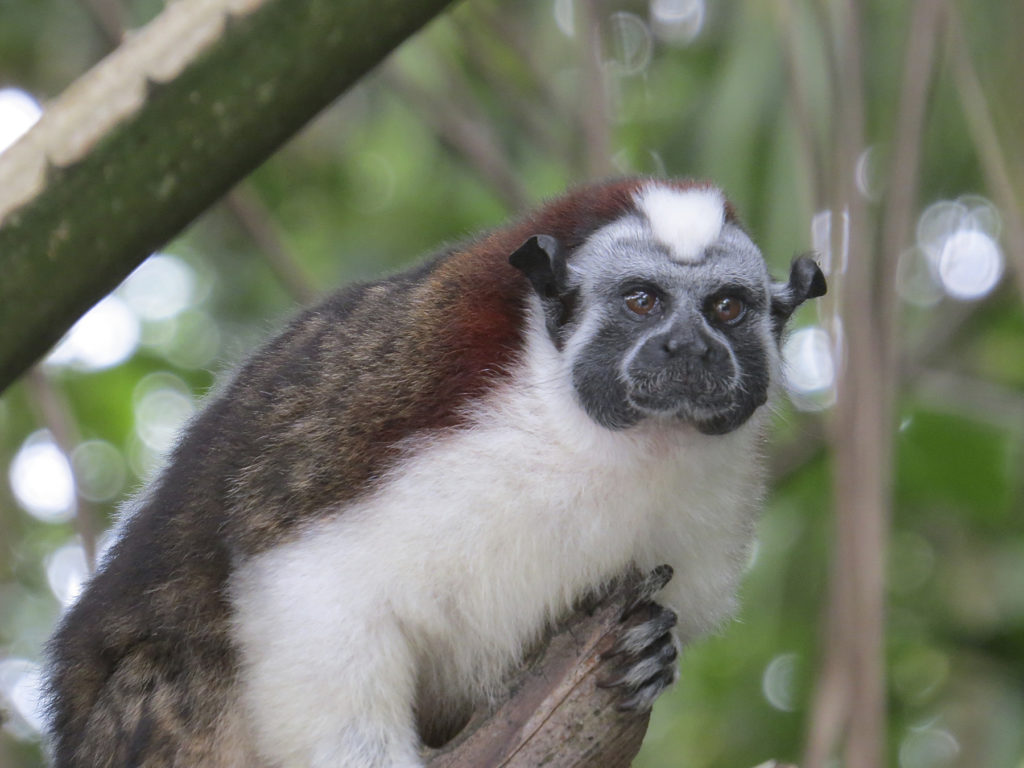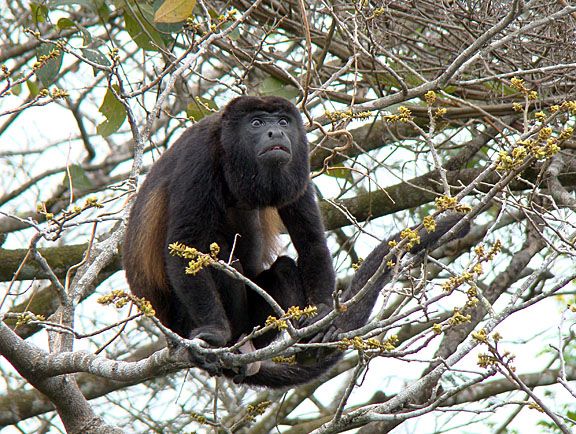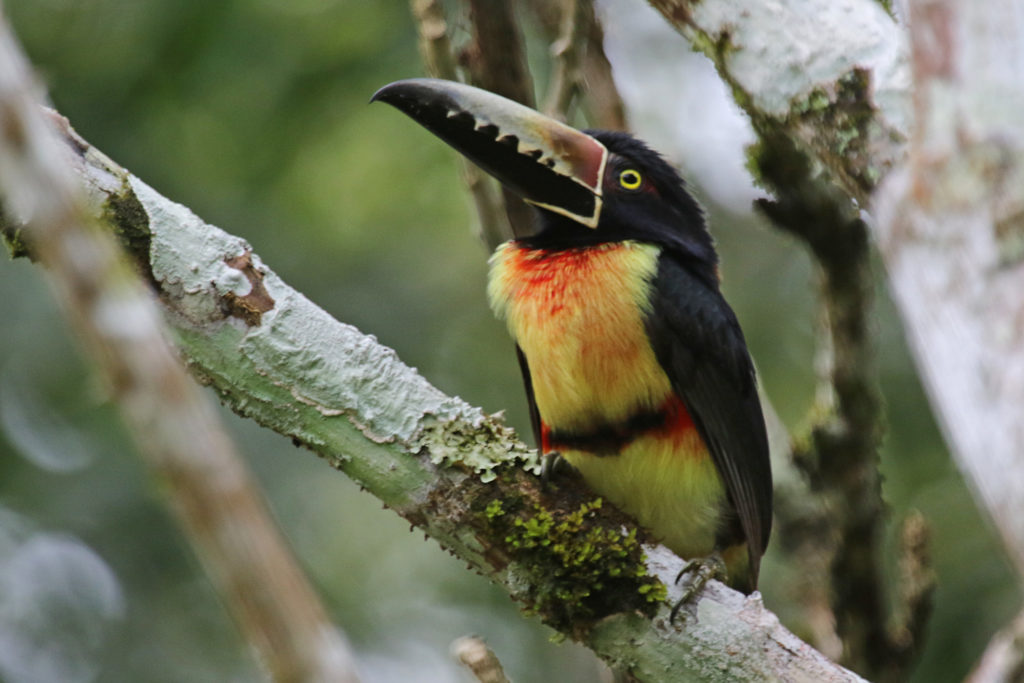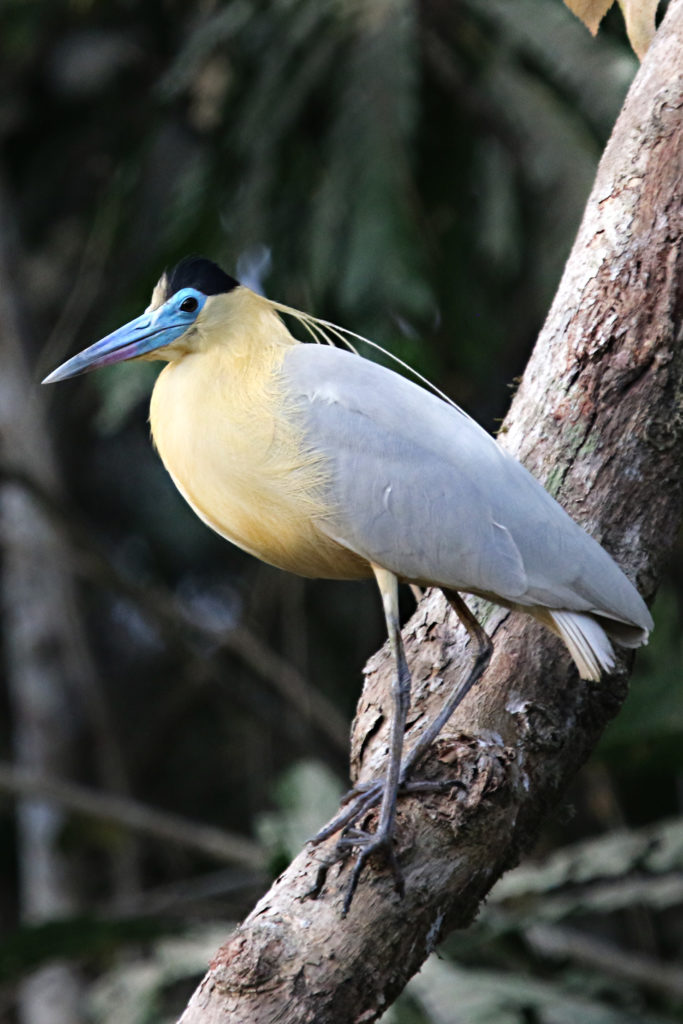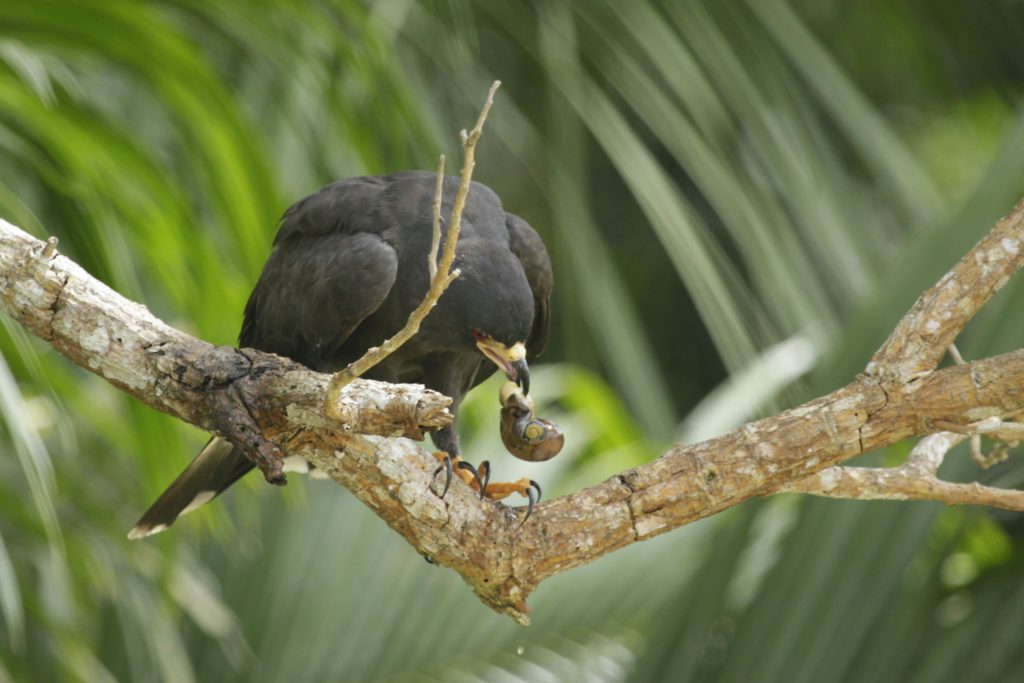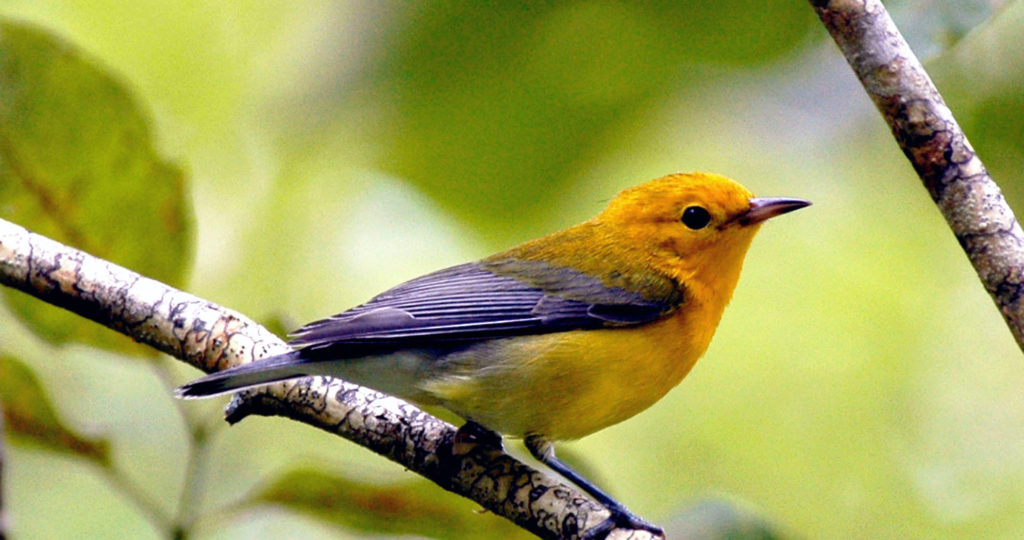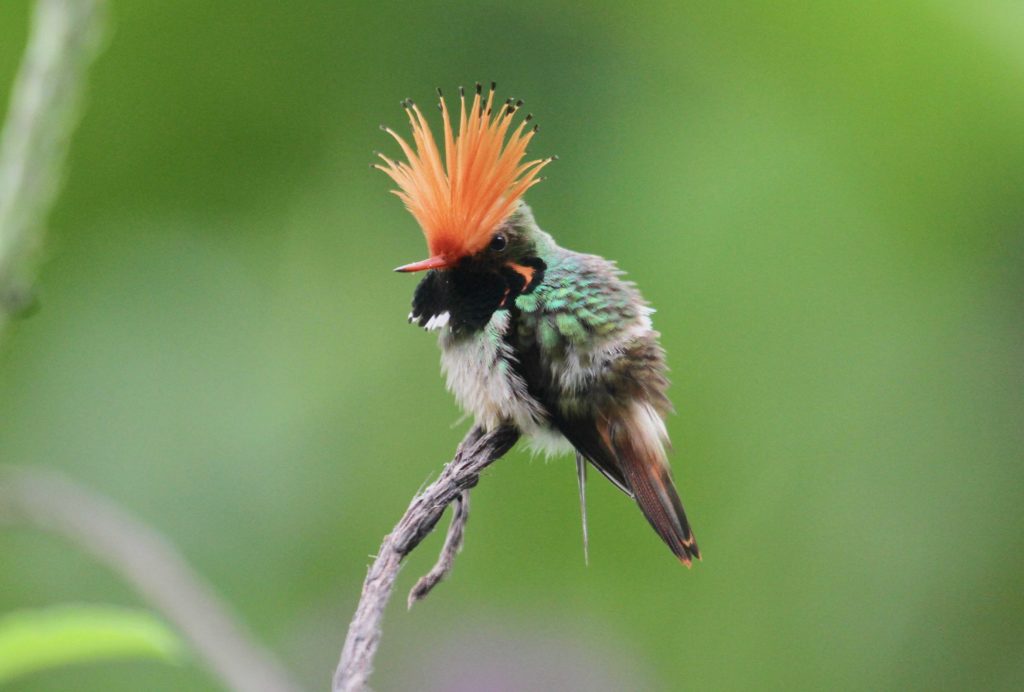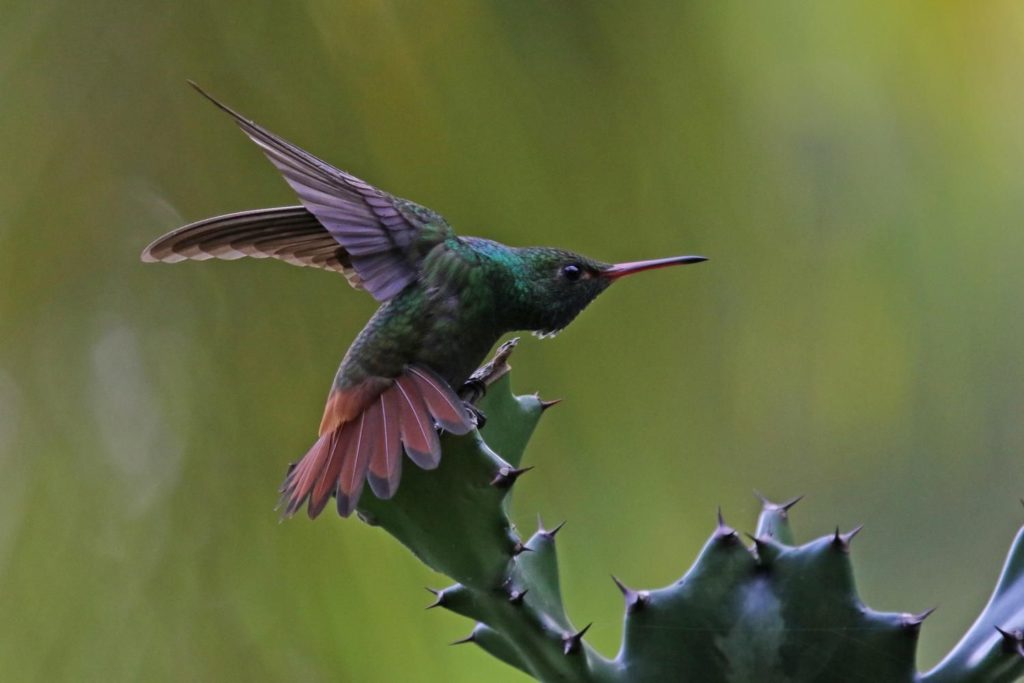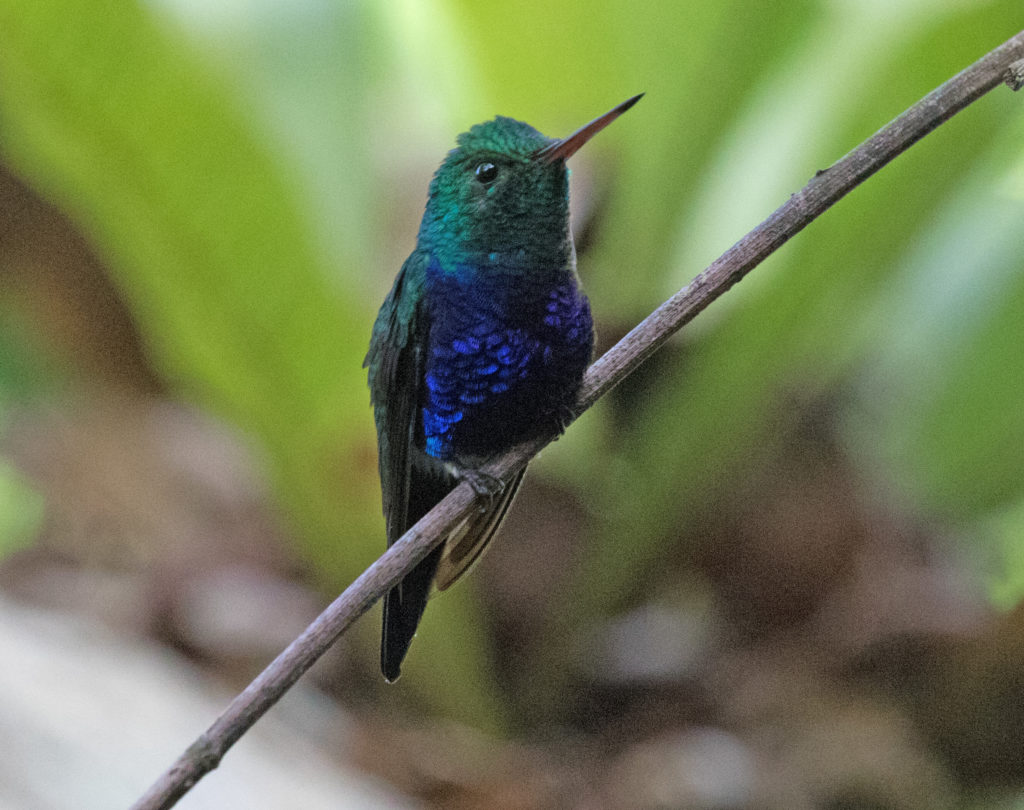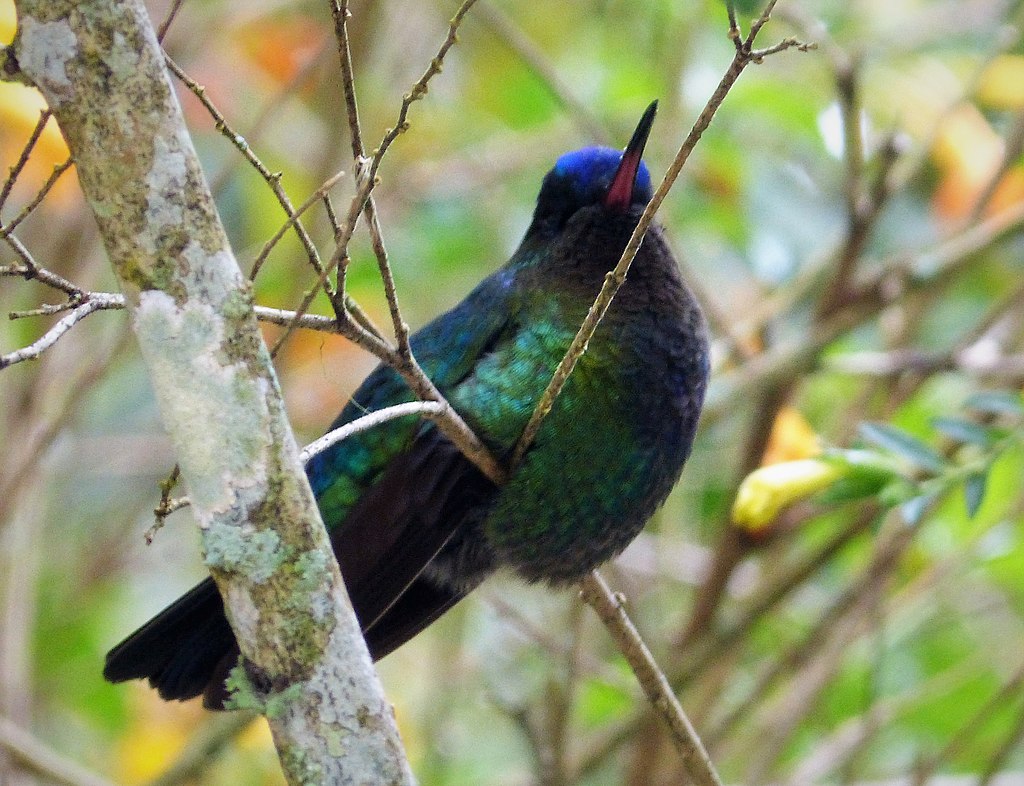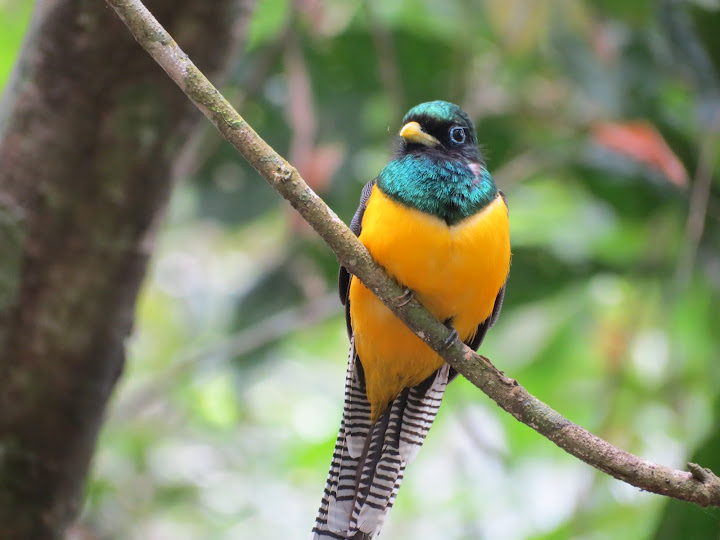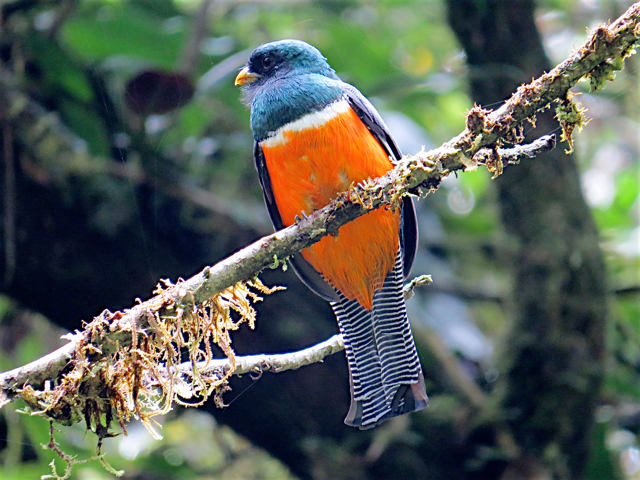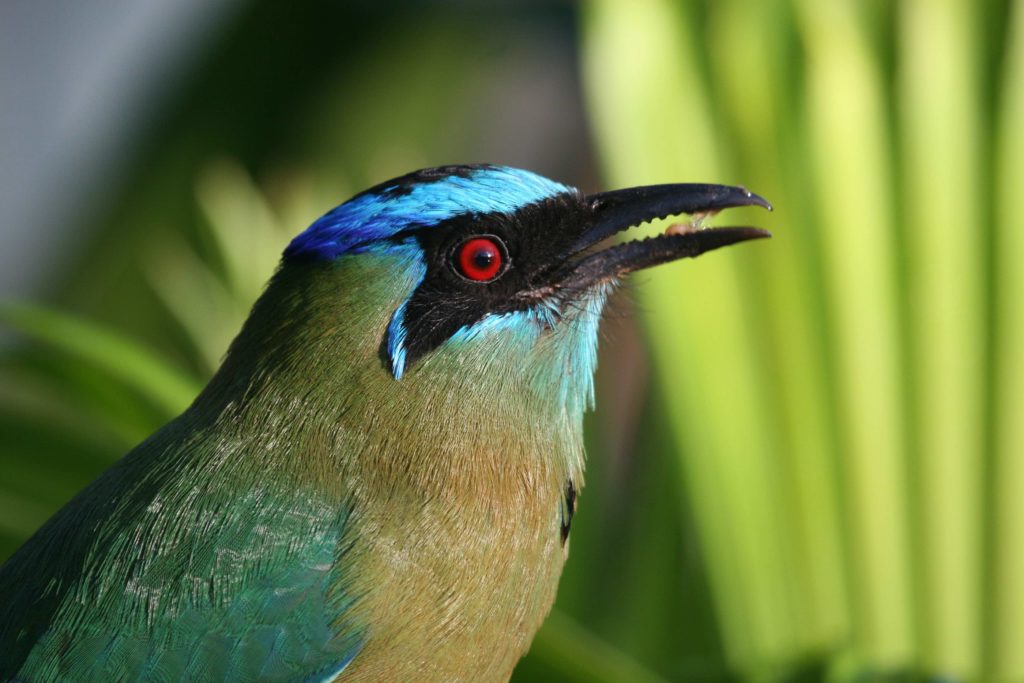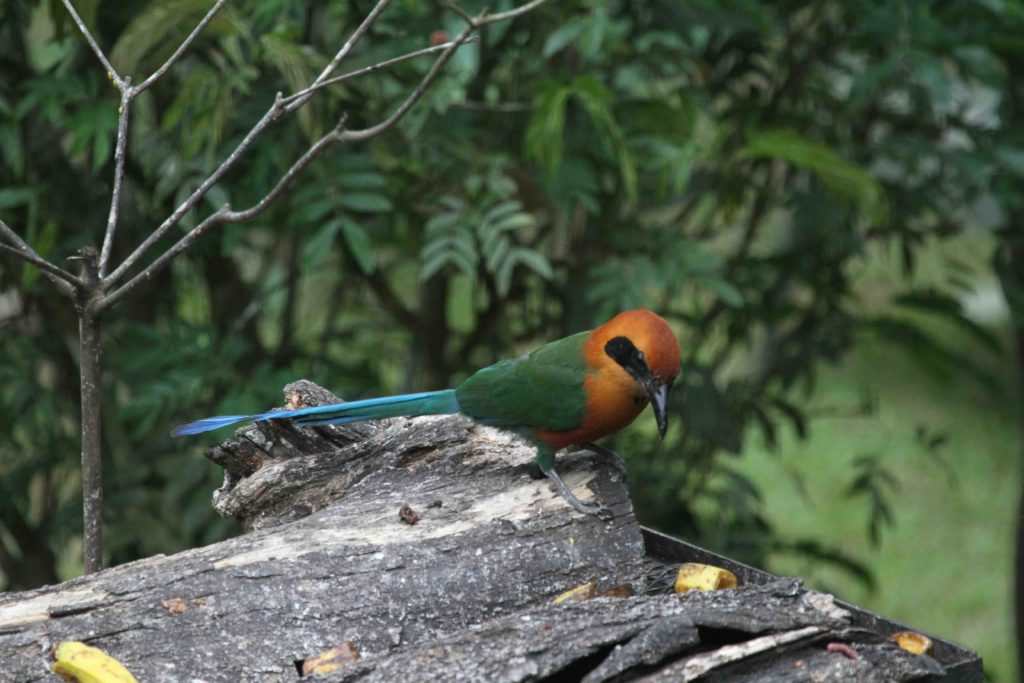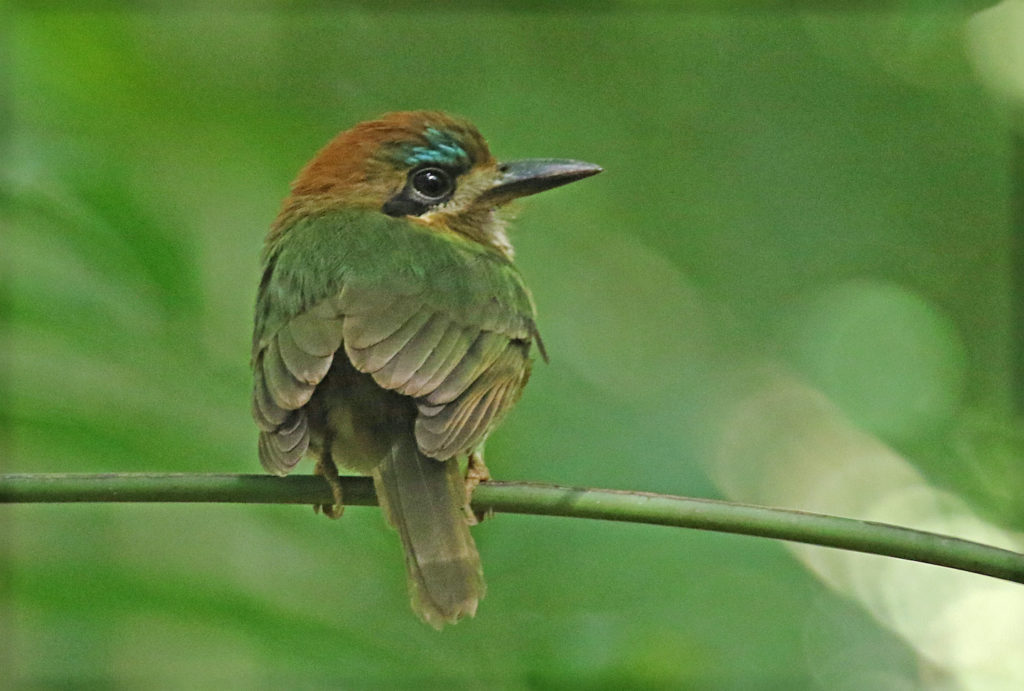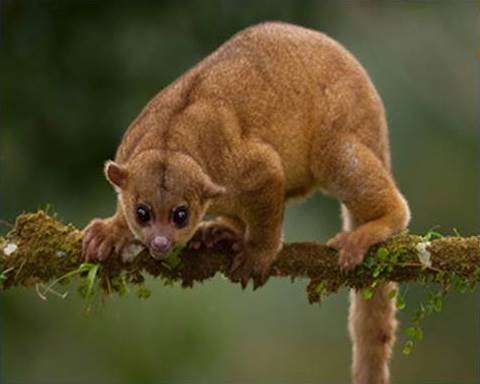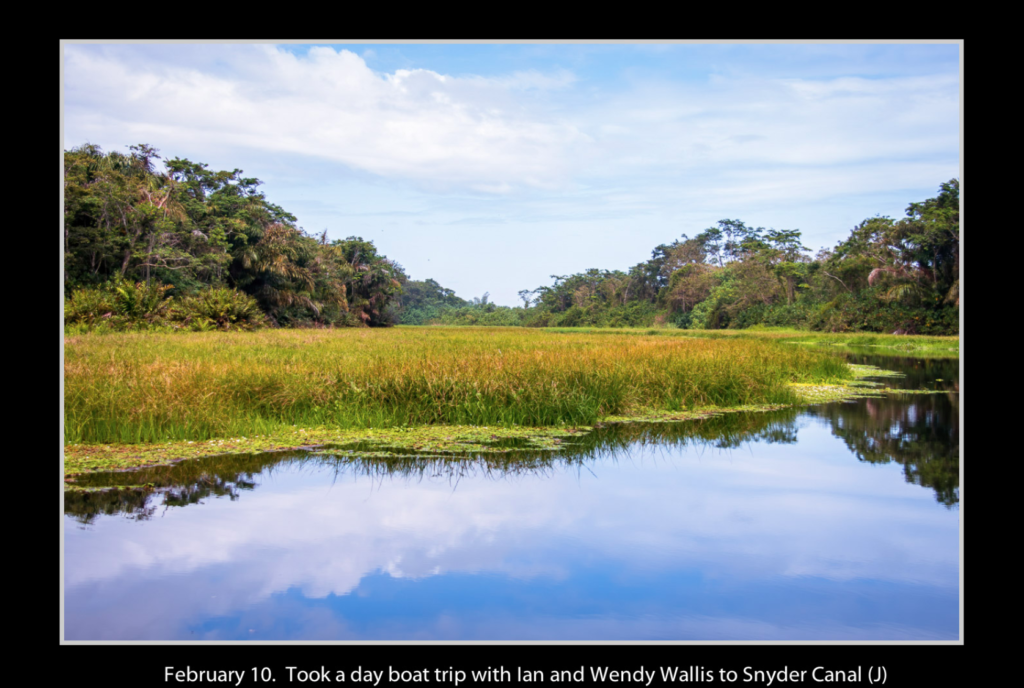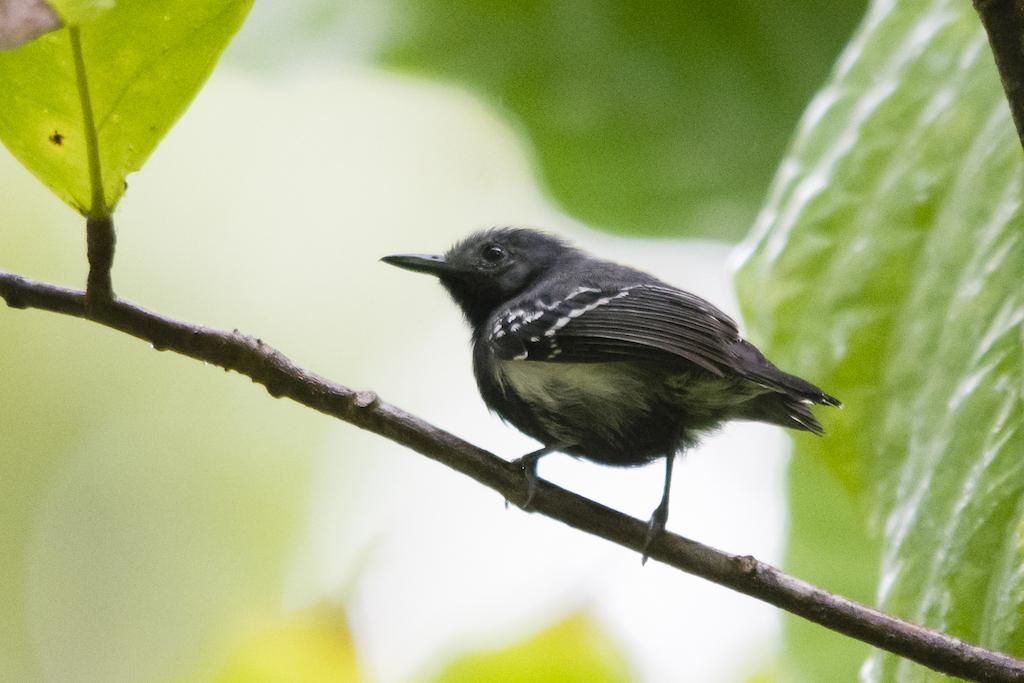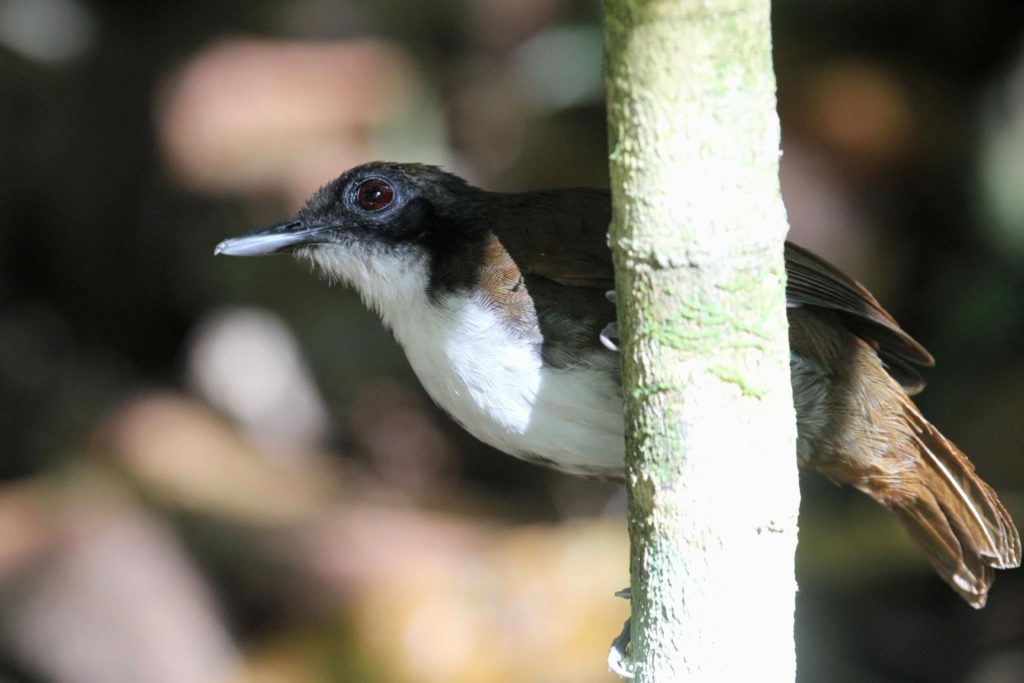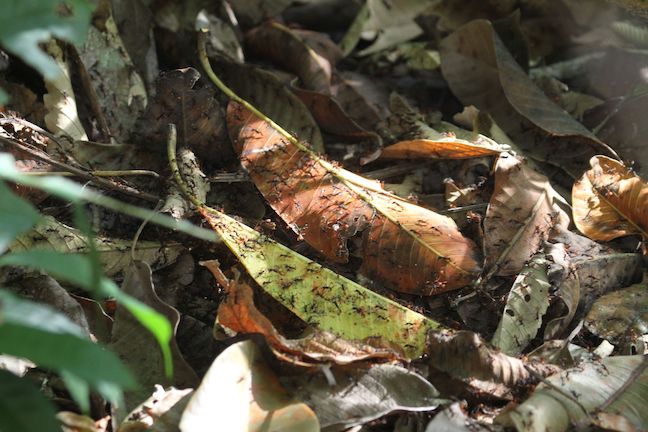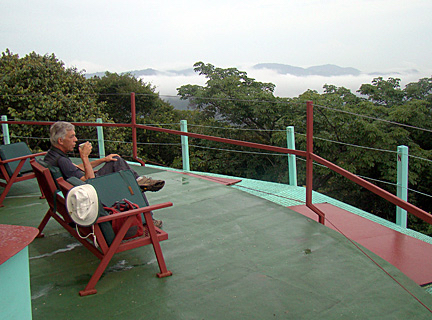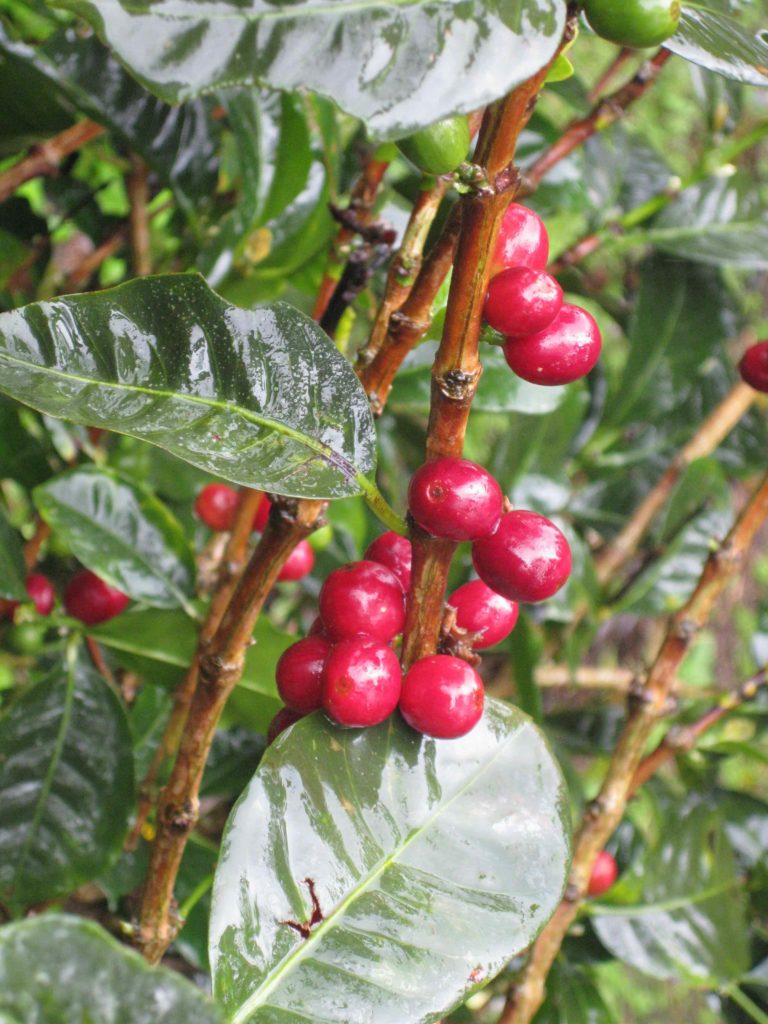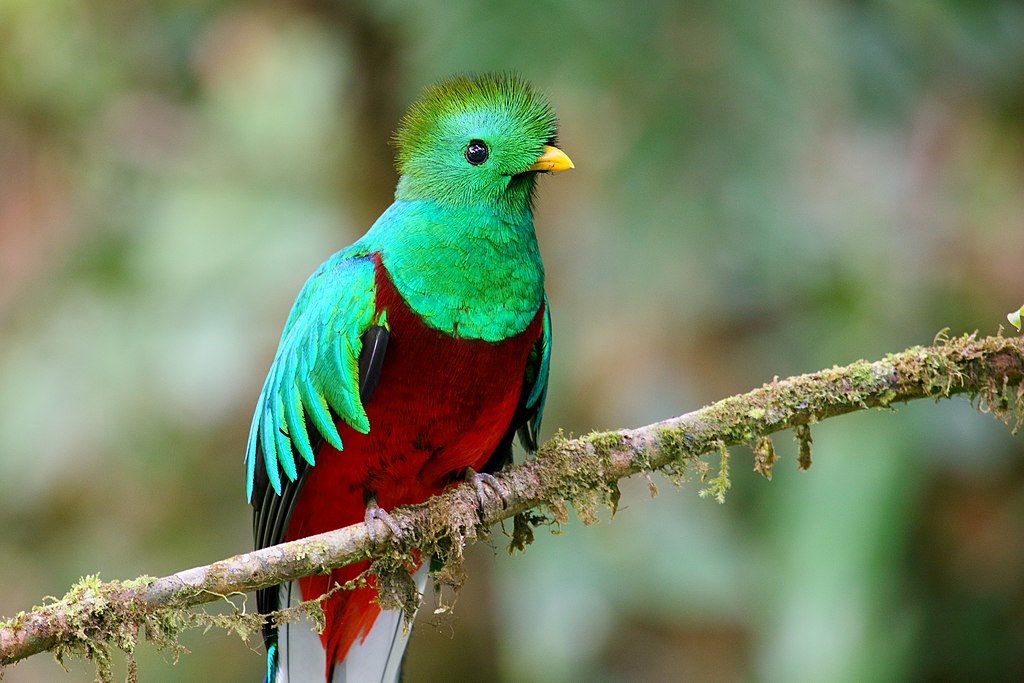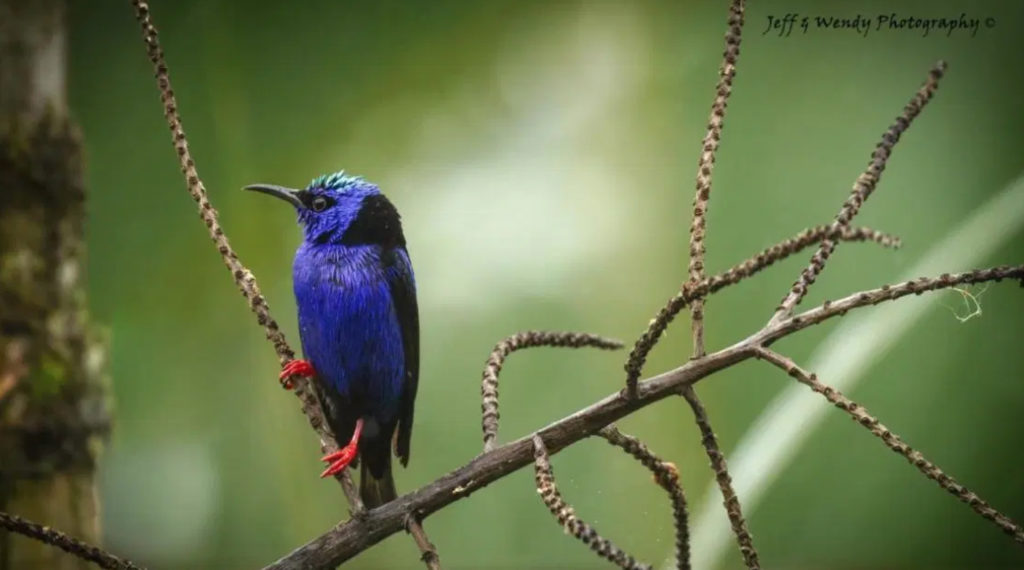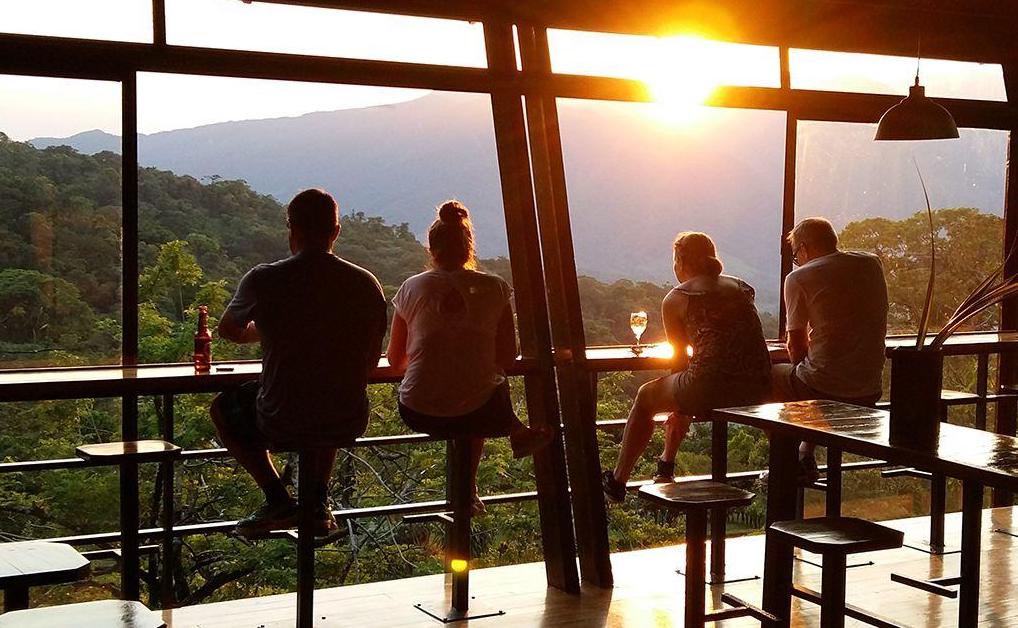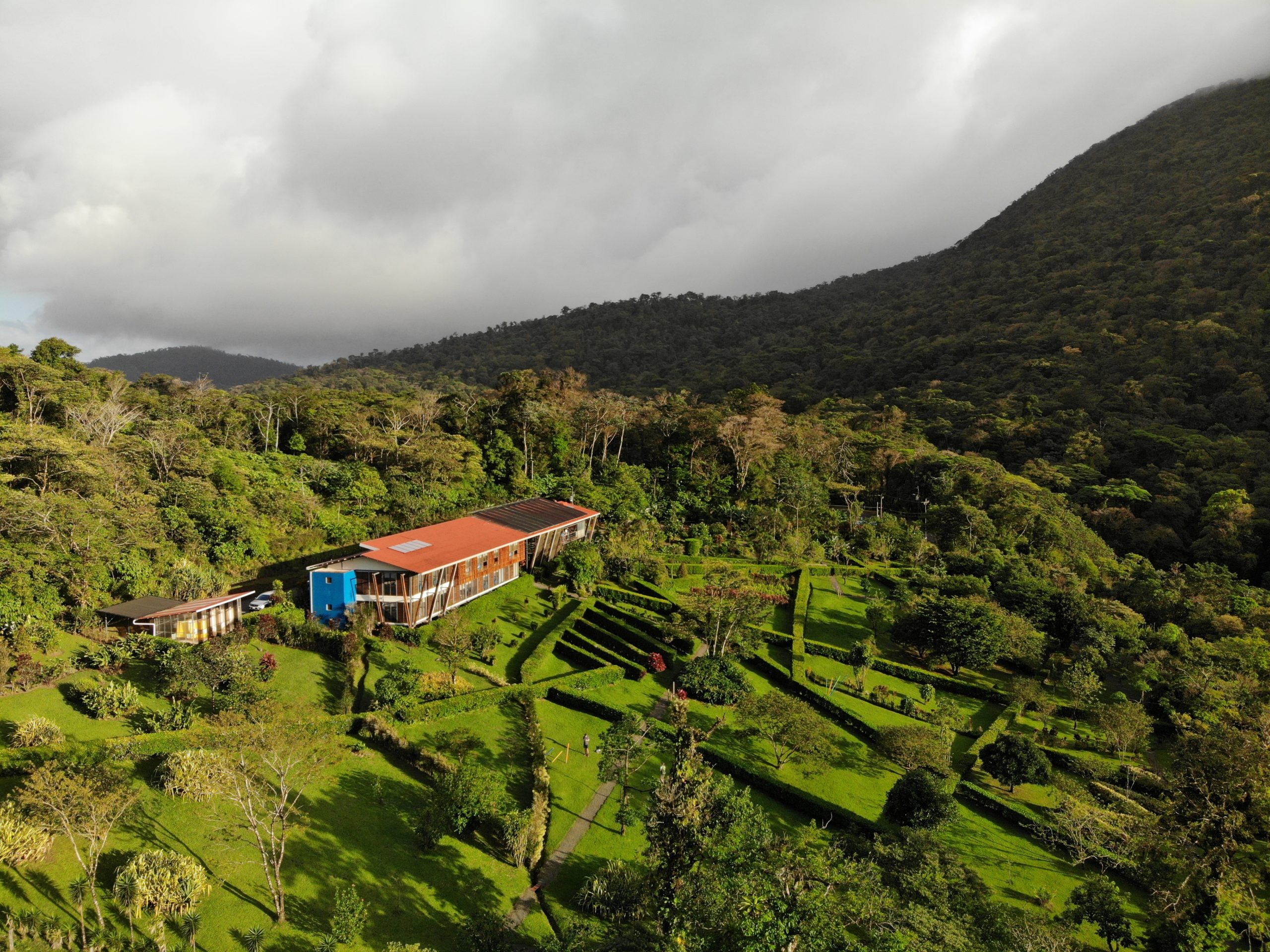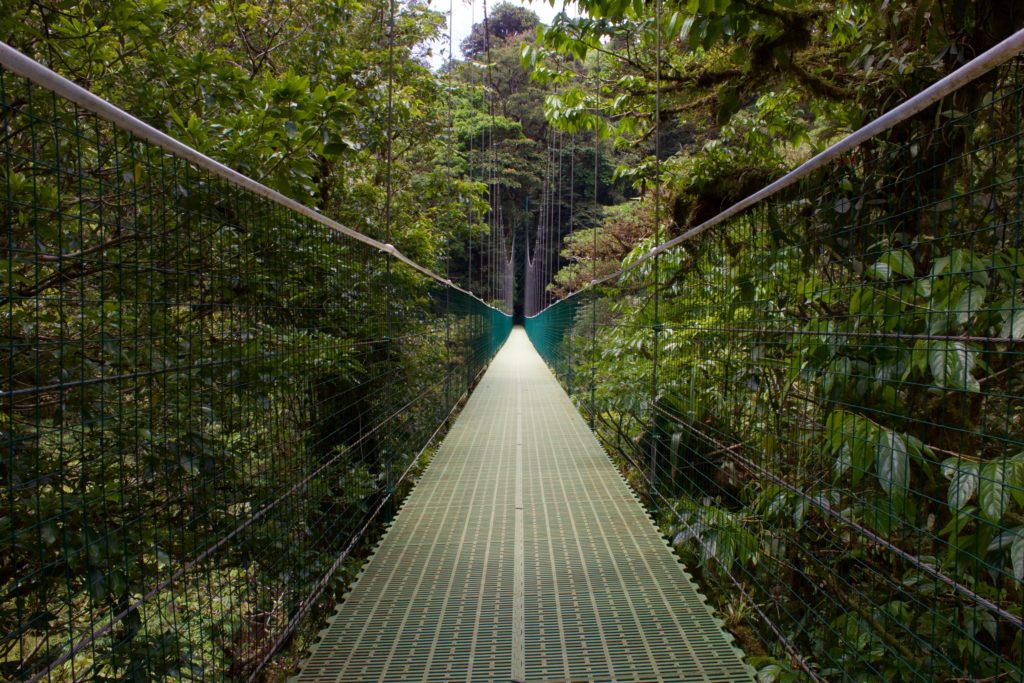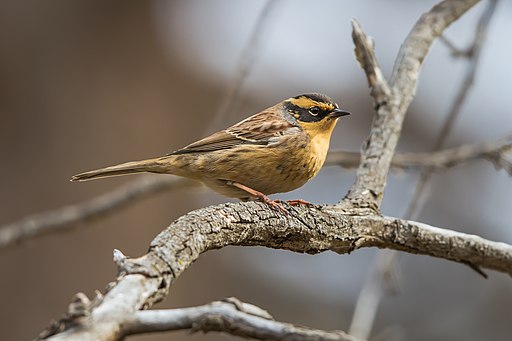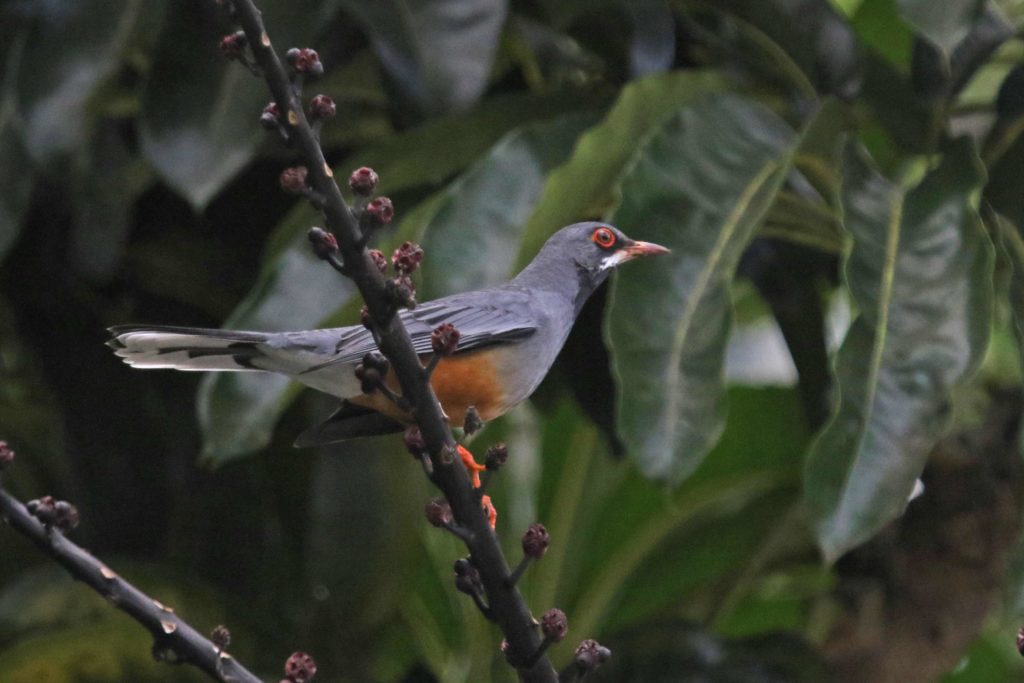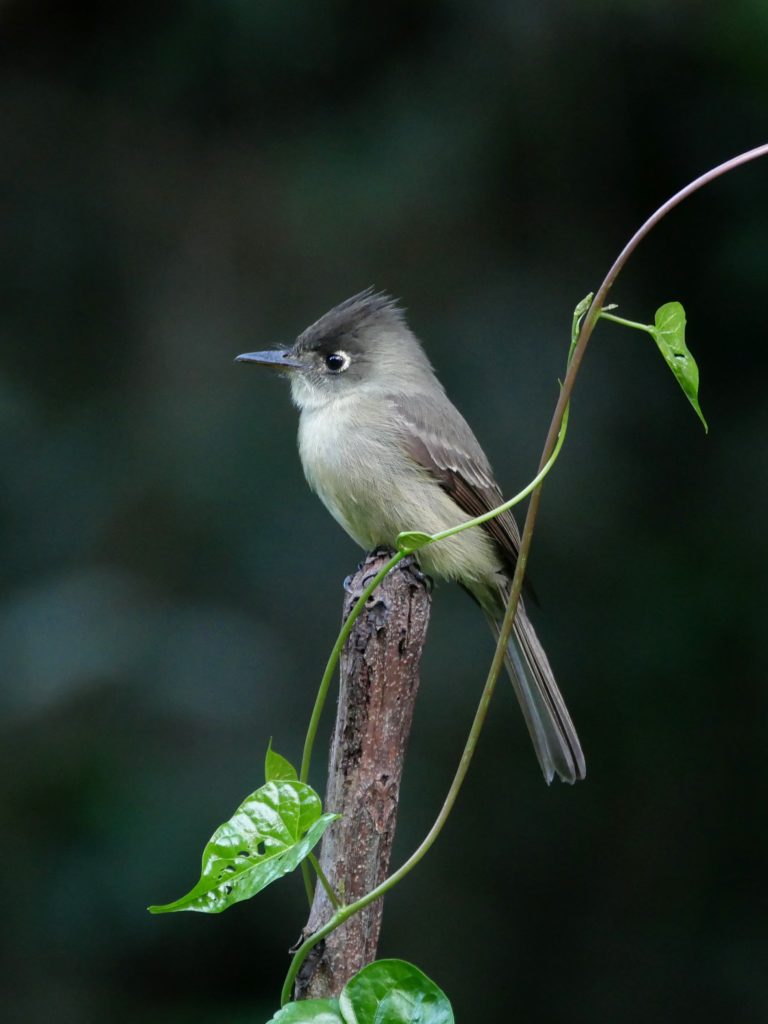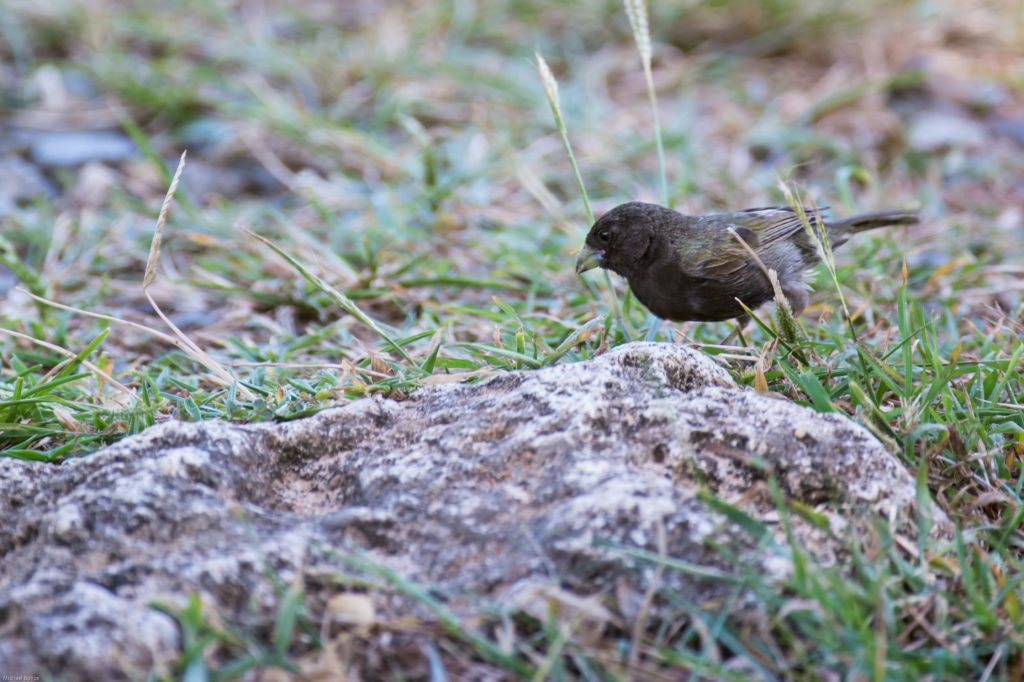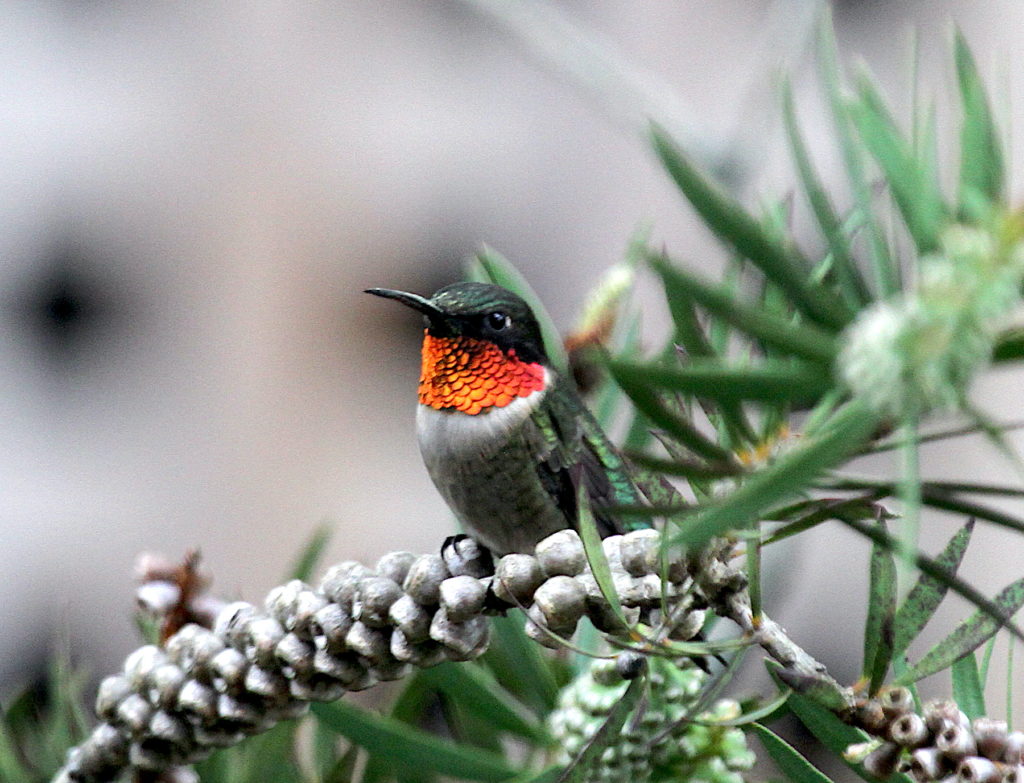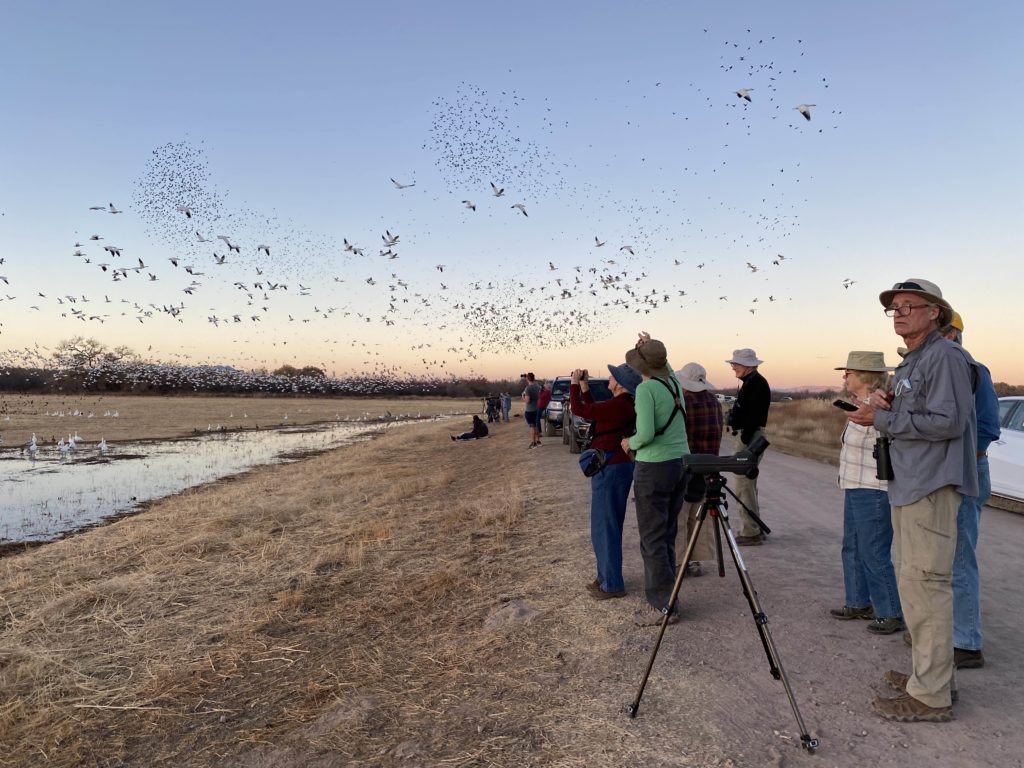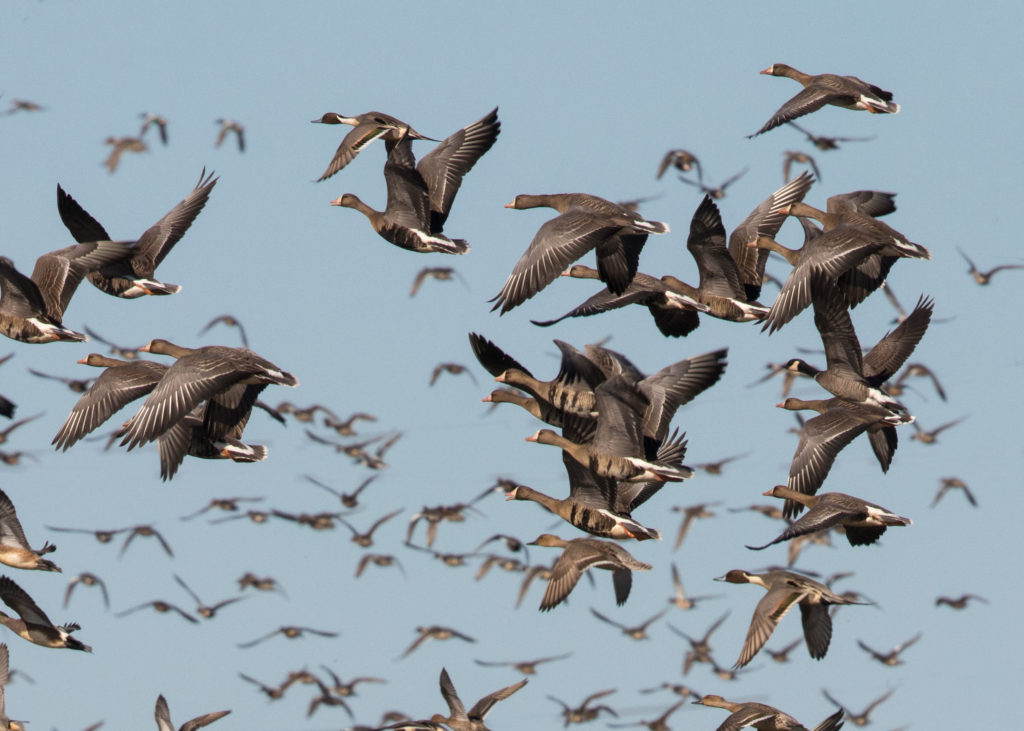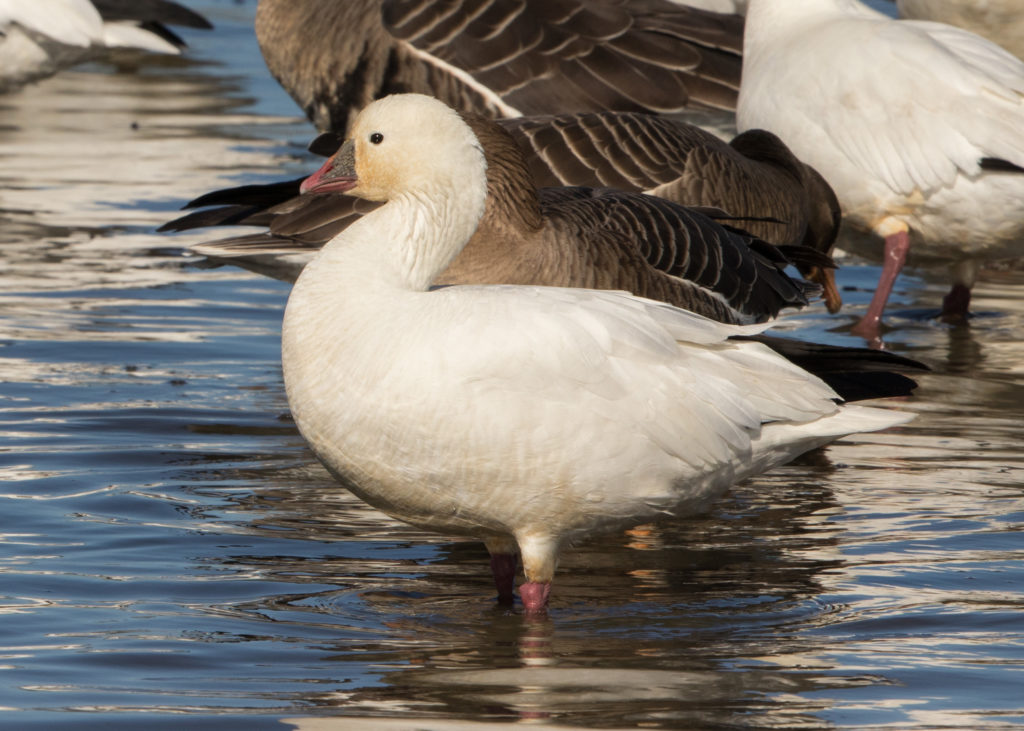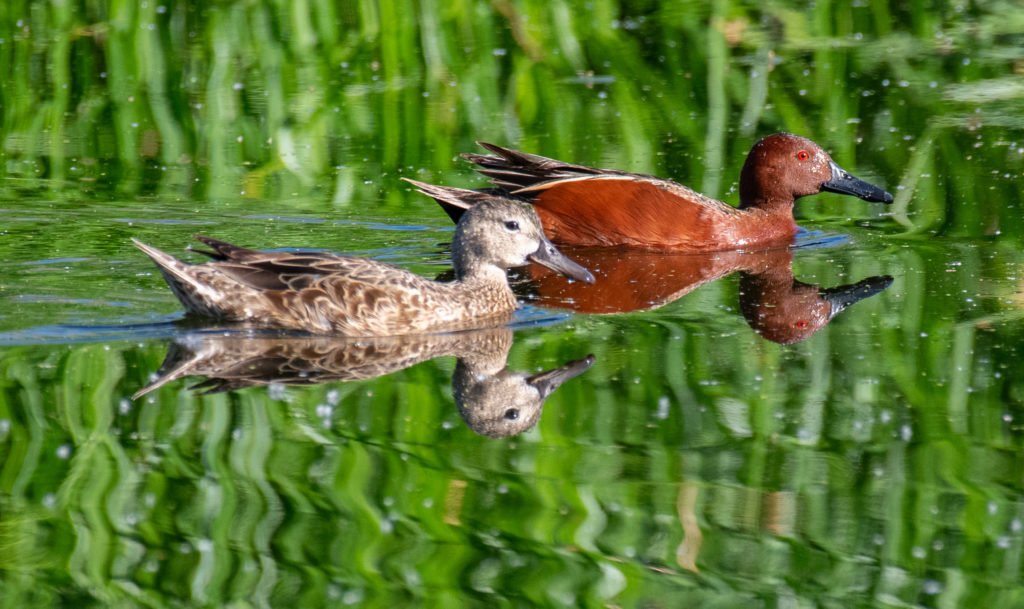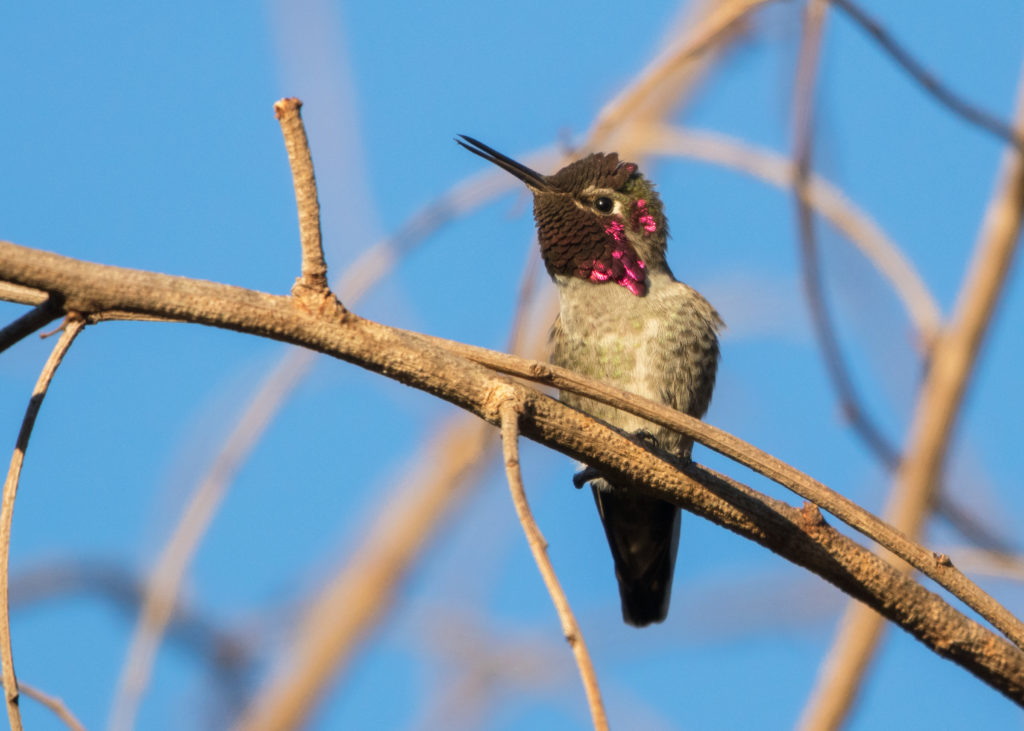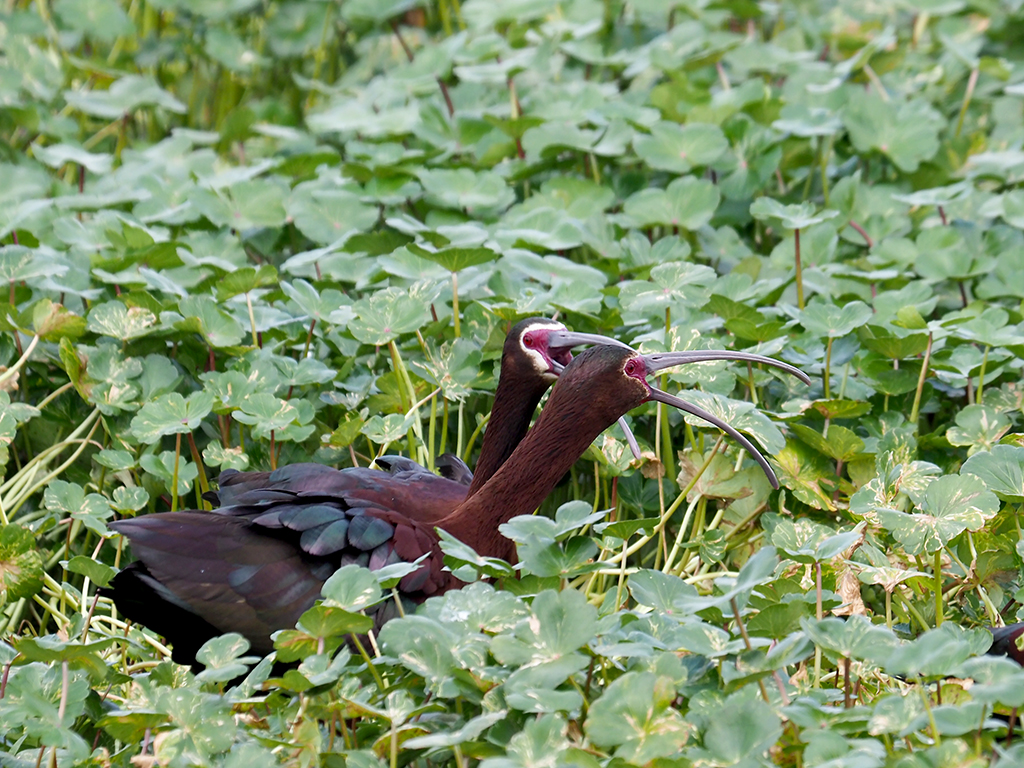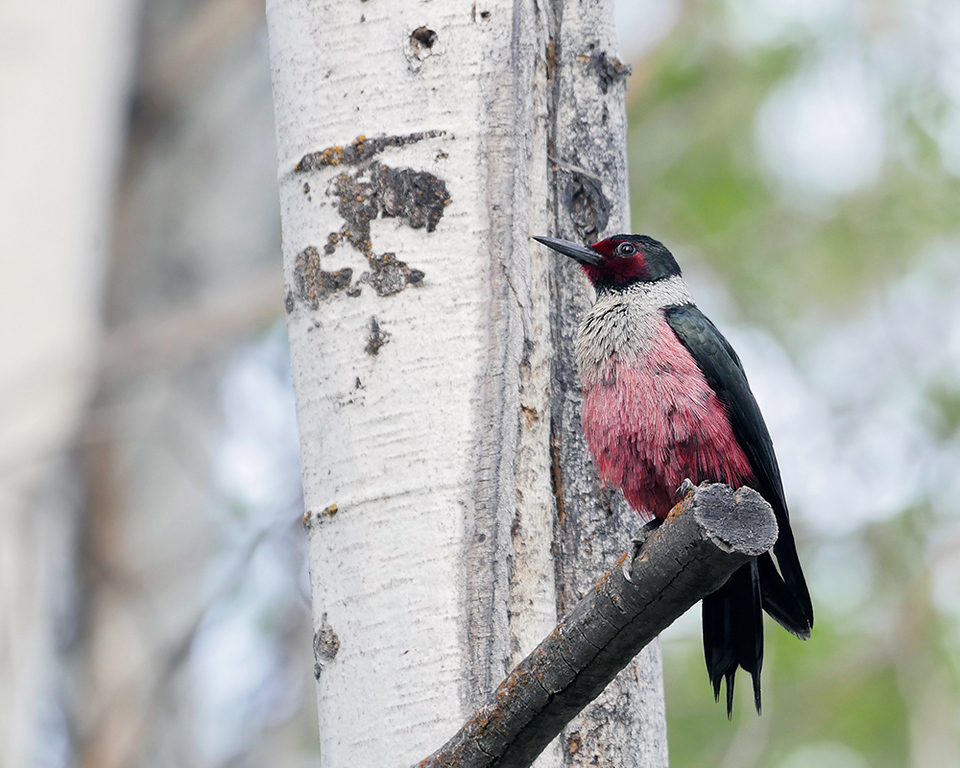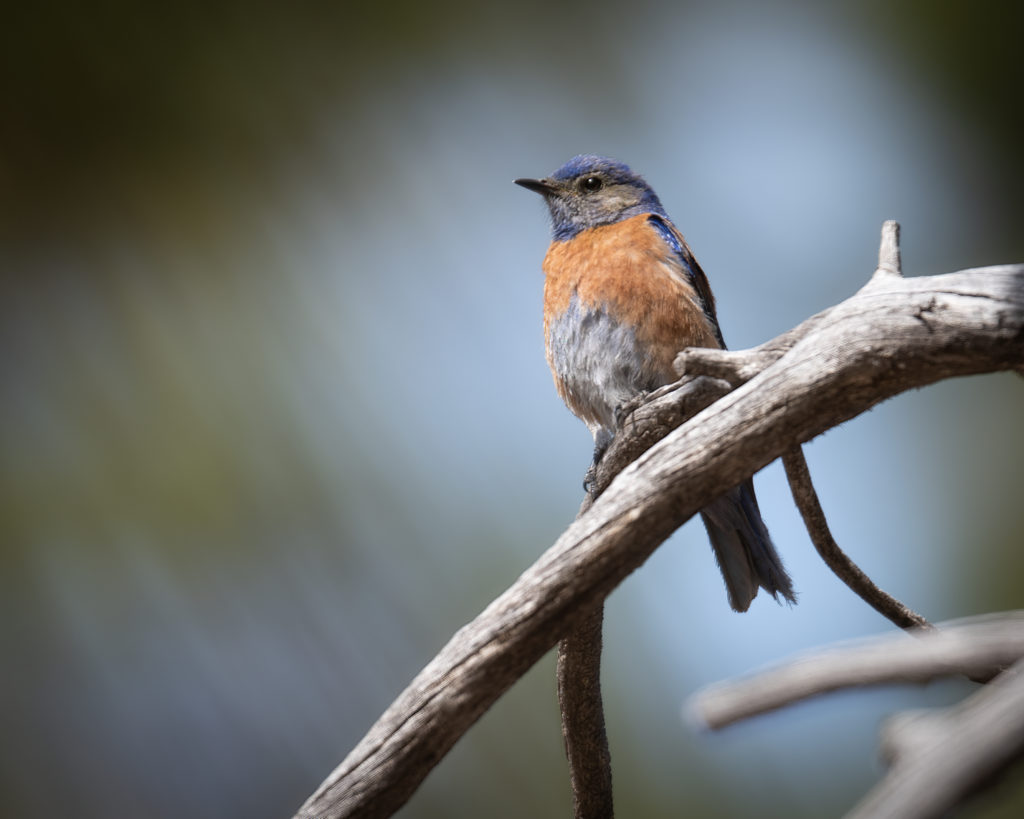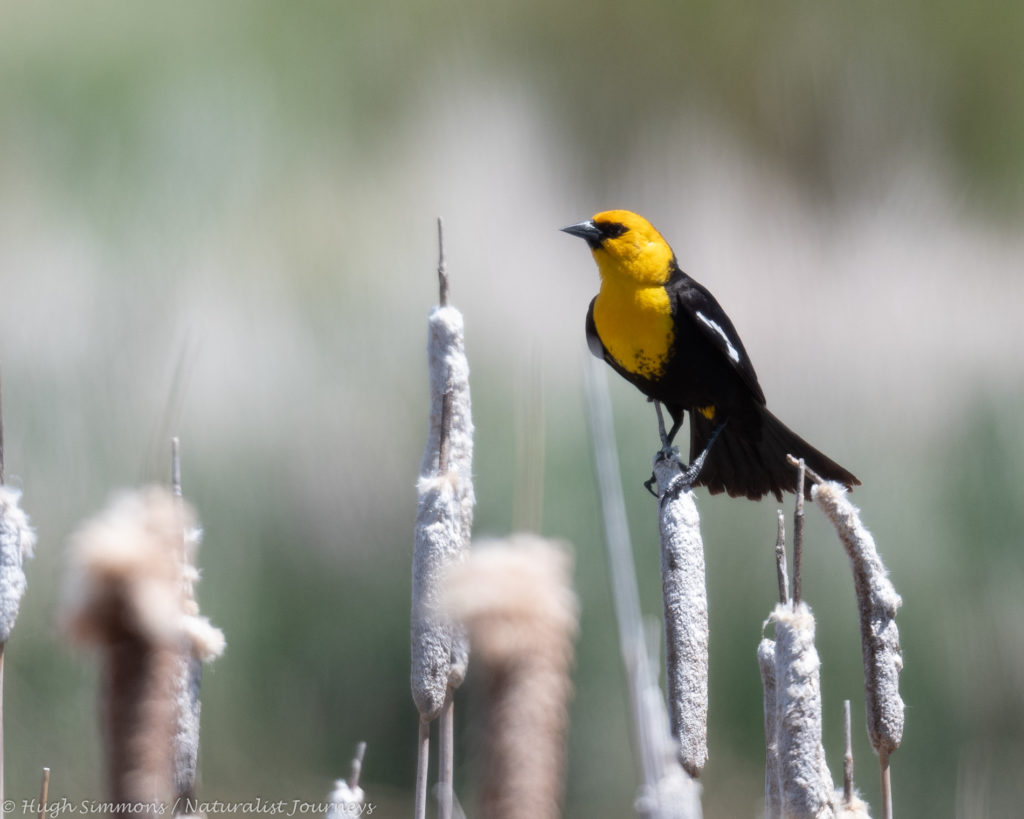Bridging North and South America with a narrow isthmus of lively jungled real estate, Panama is considered the ultimate neotropical birding destination for many reasons. Here are ten reasons our classic March 21-29 Panama Birding and Nature tour with guide Steve Shunk should be on your wish list for 2022.
1. Location, Location, Location!
We’ve already mentioned the importance of its continent-bridging location to Panama birding success. But our own lodgings at Canopy Tower and Canopy Lodge turn “location, location, location” up to 11. If our 9-Day, 8-Night tour were an adventure film, Canopy Tower would play a starring role.
A lovingly repurposed radar tower inside Soberanía National Park, our unique cylindrical lodgings put us into the treetops, with every curved window offering a view onto lush rainforest and its many furred and feathered inhabitants.
A rooftop observation deck features even more panoramic views of Soberanía’s 55,000 acres, and offers an opportunity to hold binoculars in one hand and a coffee or a cocktail in the other. Ecologically priceless, Soberanía boasts 525 of Panama’s 981 species of birds and 105 mammal species, including both Two and Three-toed Sloths and four species of monkeys we often see scampering or hear howling from our perch.
Canopy Tower is also striking distance from many of Panama’s “hotspot” birding locations, putting us in the middle of the action in yet another way. After four nights in the tower, we move inland and upwards, to Canopy Lodge near El Valle in the central mountains, which is alive with wild activity. From our open-air dining room we see a spectrum of species, including some considered furtive! Before breakfast we often see aracaris, motmots, oropendolas, honeycreepers, and warblers. We luxuriate by being in the middle of the action throughout this tour.
2. Our Timing is Perfect: Spring Migration
This trip is timed for the peak season of Panama birding. Spring migration will be in full swing and we are treated to a parade of warblers and neotropical migratory birds in fresh breeding plumage. While not as concentrated as fall migration, as many as 18 species of raptors will be making their way north, drafting on thermals, concentrating as Panama narrows. What a spectacular show! Hundreds of Broad-winged and Sharp-shinned hawks, in particular, may be spotted in a single day!
3. Hummingbirds on Parade
Central America is a haven for hummingbirds, and the birders who love them, and Panama birding offers some 60 hummingbirds for us to discover! Our lodgings’ feeders and adventures further afield offer plentiful opportunities to create your own photo gallery of these delightful high-energy species!
4. Mixed Flocks
It can be VERY exciting when birds NOT of a feather flock together, layers of varied colors and sounds dividing up close-proximity territories and exploiting co-located food sources and collectively looking out for predators. This is a very common phenomenon in Central American countries like Panama, making for exciting and productive bursts of birding!
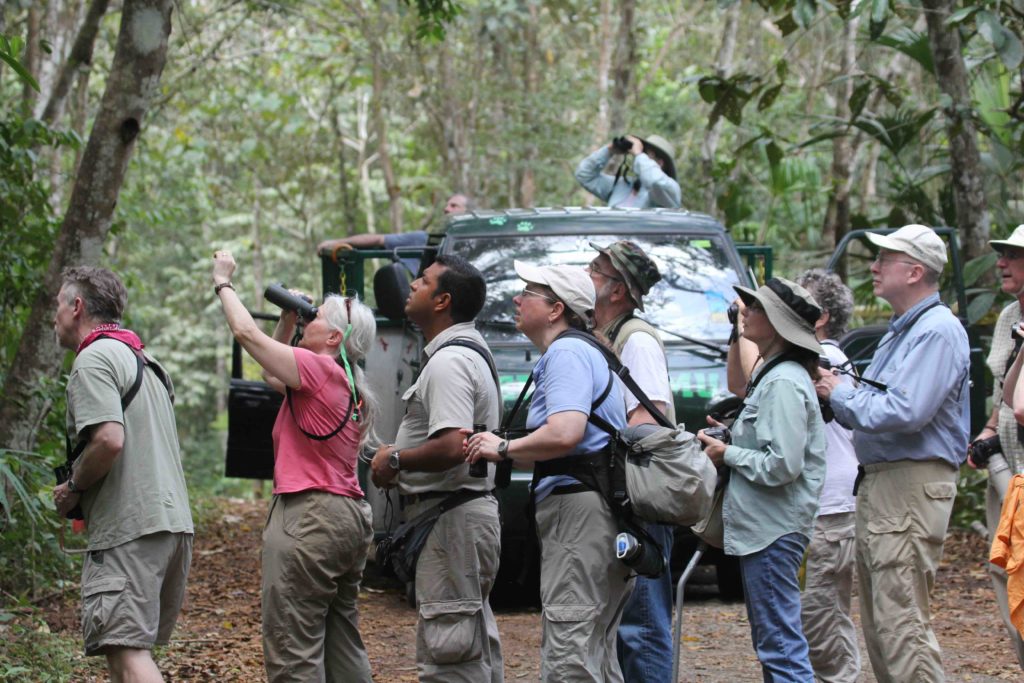
Mixed flocks puzzled scientists for a long time, but now it’s believed that there are leader and follower birds that create this arrangement, with smaller insectivorous birds feeding nearer the treetops hitching a ride with other birds feeding lower in the canopy, taking advantage of their vigilance to predators, letting down their own guards a bit and spending more of their time and energies feeding. Our groups certainly seem to get a jolt of energy when we get into a mixed flock!
5. The Trogon and Motmot Show
Showy is right! Panama birding offers opportunities to see nine members of the trogon family: Black-throated Trogon, Orange-bellied Trogon, Baird’s Trogon, Lattice-tailed Trogon, White-tailed Trogon, Slaty-Tailed Trogon, Collared Trogon, and Gartered Trogon. We also have chances to see several Motmots, who rival the Trogons for colorful display, including those shown in this gallery: Tody, Broad-Billed and Blue-Crowned.
6. Night Shift Hijinks
We offer opportunities to seek out Panama birds and animals that work the forest night shift, including Spectacled Owl and mammals like Allen’s Olingo, Woolly Opossum, and Kinkajou, which are often feeding on fruits and flowers. It’s a lot of fun to be under the immense canopy of rainforest trees as the nocturnal wildlife gets active. Our skilled Canopy Tower guides are specialists in finding these mysterious jungle residents!
7. Boating Gatun Lake and the Panama Canal
Boating is part of this Panama birding tour as well, as we explore two un-natural wonders: Gatun Lake and the Panama Canal. The largest man-made lake in the world when it was created, Gatun Lake contains the flow of all the rivers within the Panama Canal Watershed to provide water for the operation of the Panama Canal lock system. And of course, it also provides a habitat to a host of species we are eager to see!
8. Beautiful Blooms, Butterflies and Bugs!
More than 10,000 plants call Panama home, including many lovely showy orchids and flowers, which attract butterflies, other insects, birds and photographers! So beautiful are the plants on this tour, you might be distracted from your birding….
9. Ants! (And the Birds Who Love Them)
If you’ve spent any time in the tropics, especially in a jungle, you’ve no doubt seen Leafcutter and Army Ants at work! Leafcutter ants in particular are a marvel as they march along, fluttering bits of verdant leaf and colorful flowers on the way back to their mounded nests. Ants are especially interesting to us as they also attract antbirds and antwrens and we are always on the lookout for ants for that reason!
10. Panamanian Coffee and Food!
One of the most pleasurable experiences of the trip is taking a steaming cup of Panamanian coffee to the observation deck of Canopy Tower and waking up as the forest comes alive around you. We eat many of our meals in view and earshot of the forest as well, enjoying camaraderie and delicious and fresh local foods. There is pleasure aplenty for all of the senses on our March 21-29 Panama Birding and Nature Tour!

